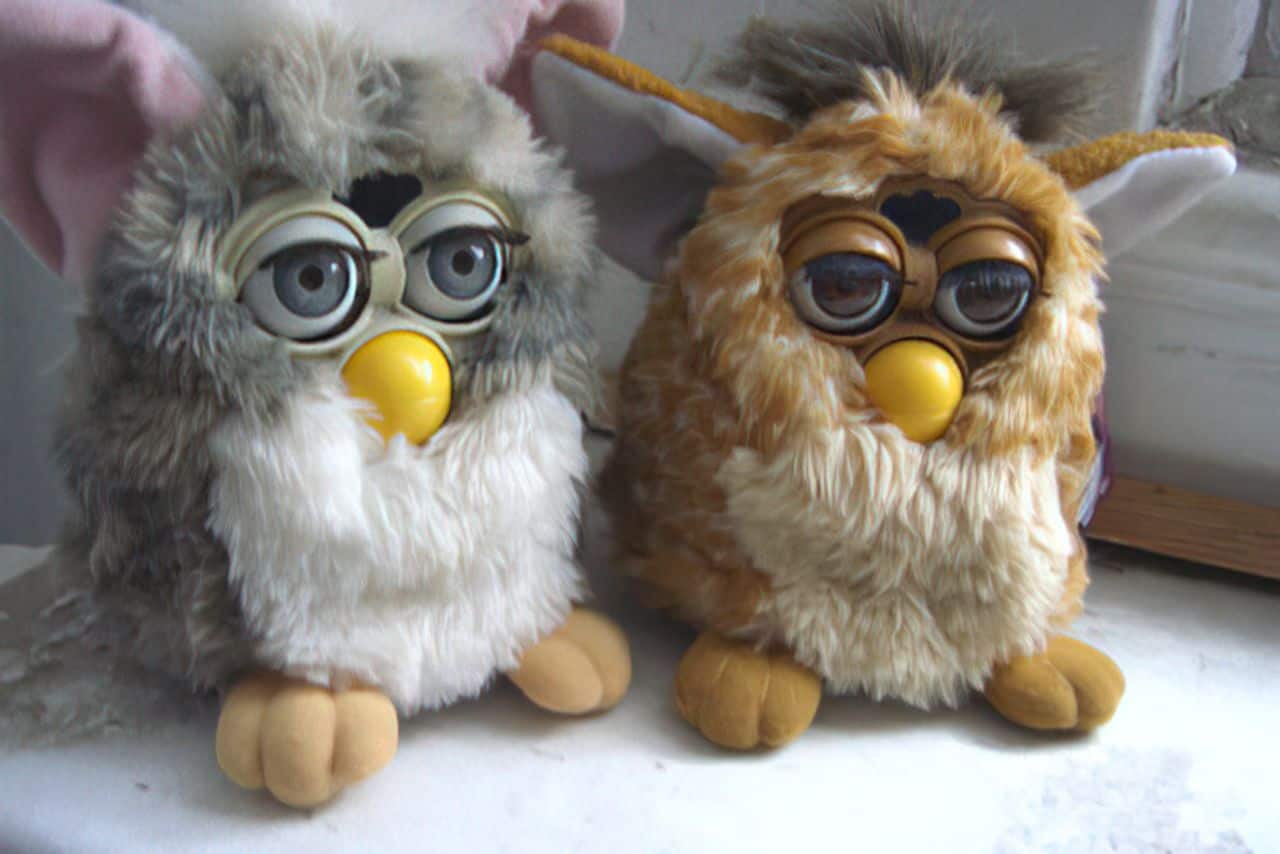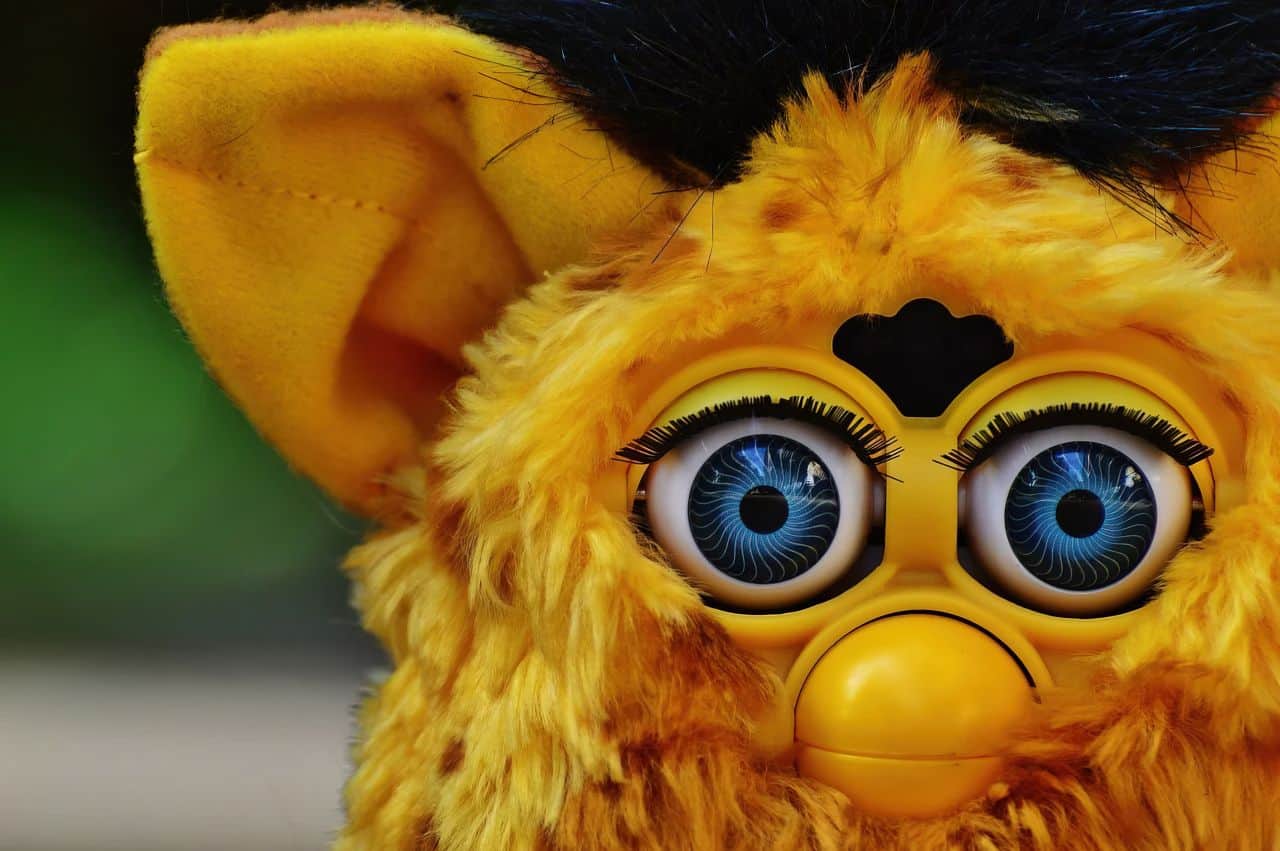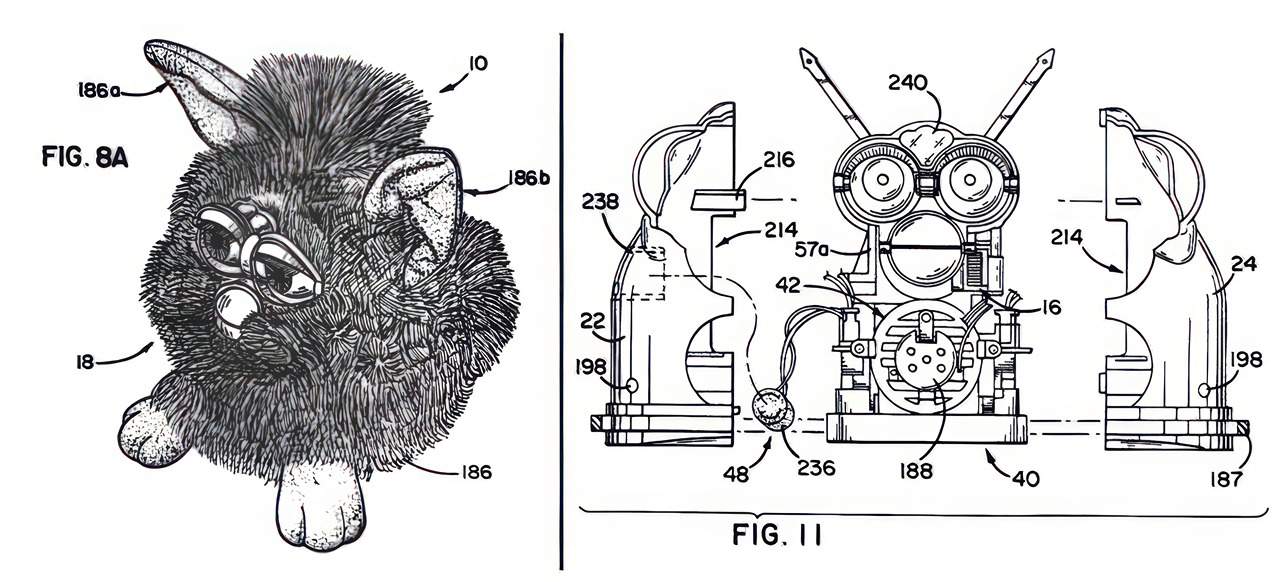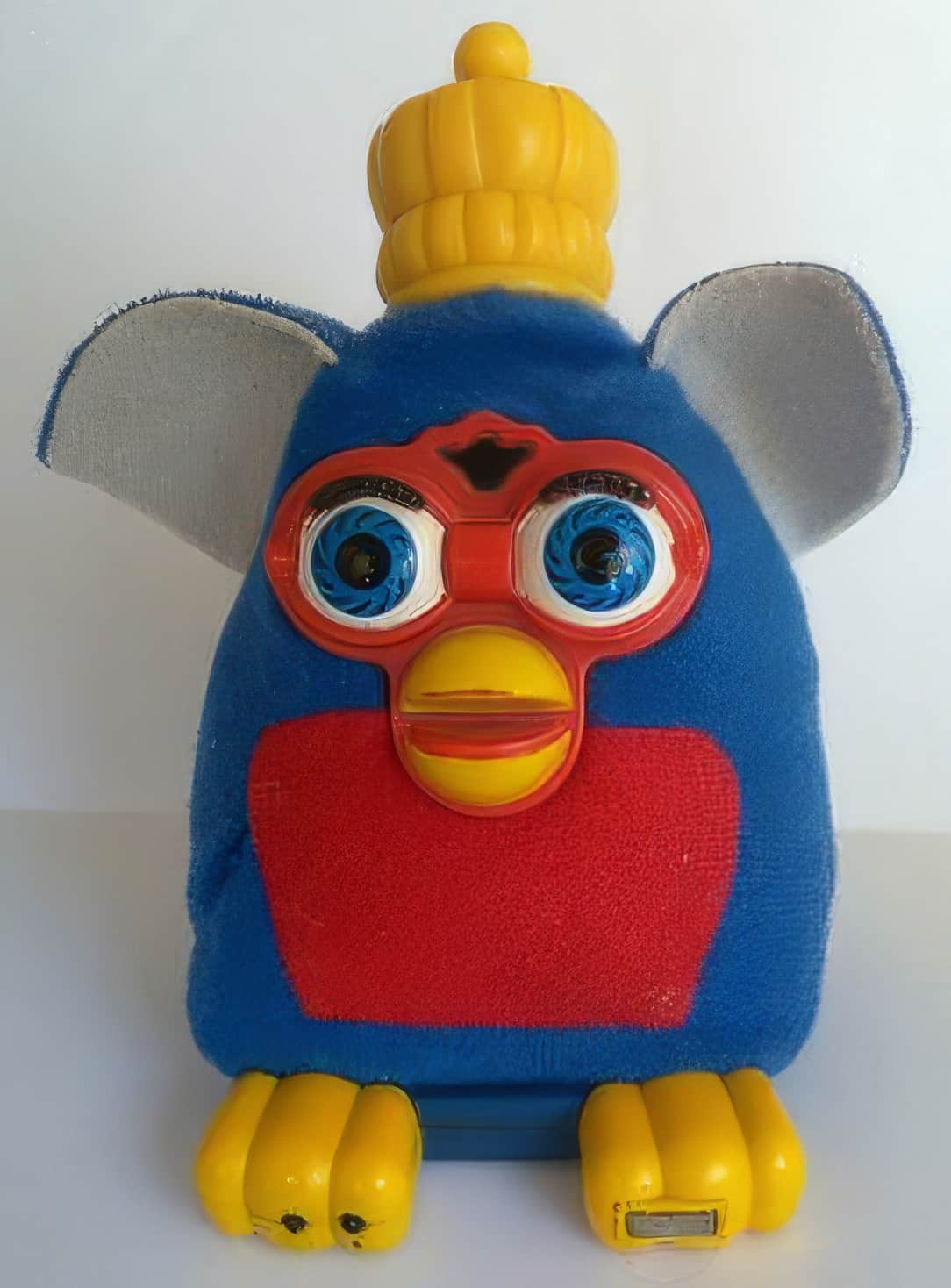If you were around in the late ’90s, you remember the Furby craze. These quirky, owl-like robotic toys became one of the first commercially successful robots for home use, making a massive impact on pop culture and capturing the hearts of millions.
But what is a Furby, really? This guide will take you through the entire history, from their initial creation at Tiger Electronics in 1998 to the latest generation hitting shelves today, exploring every revival and technological leap along the way.
Key Takeaways
Furby is an electronic robotic toy first launched in October 1998 by Tiger Electronics, sparking a massive holiday trend.
There have been five distinct generations of Furbies, including the most recent revival in 2023, each with unique designs and features that built upon the original’s charm.
Furbies are designed to be interactive, using sensors for touch, light, and sound. They famously speak “Furbish” and gradually learn English words through interaction, a feature that has defined them since the beginning.
Despite early security concerns, which led to a ban by the NSA in 1999, the Furby franchise has continued to thrive under Hasbro. The newest 2023 model even operates without internet connectivity, addressing modern privacy worries.
Table of Contents
What Is A Furby?

A Furby is an electronic robotic toy first released in 1998 by Tiger Electronics, which was later acquired by Hasbro. It quickly became the “must-have” children’s toy of the holiday season, defining a generation of interactive play.
A Brief Description Of Furby
You can best describe a Furby as a fluffy, interactive pet that took the world by storm. Its unique design, inspired by the Mogwai creatures from the movie Gremlins, gave it an endearing and slightly mysterious look.
When first launched, Furbies carried a retail price of around $35. However, intense demand during the 1998 holiday season caused resale prices to soar, with some selling for over $100.
What truly set Furbies apart were their advanced sensory interfaces and audio capabilities. They seemed incredibly lifelike, responding to touch and sound, and their ability to “learn” English over time gave them a captivating charm.
They could even communicate with each other using an infrared port between their eyes, creating fascinating group dynamics when multiple Furbies were in the same room.
History Of Furby

Originally created by Tiger Electronics in 1998, Furby became a true Christmas fad. It sold 1.8 million units in its first year and a staggering 14 million in 1999. In total, over 40 million Furbies were sold during the toy’s initial three-year production run.
Initial Creation
The story of Furby begins in 1997 with inventors Dave Hampton and Caleb Chung. With a shared passion for robotics, they aimed to create an affordable and highly functional robotic pet for the masses.
Inspired by the popular Tamagotchi toy craze, they envisioned something more lifelike and interactive. It took them nine months to design the concept and another nine months to build the first prototype.

After partnering with toy designer Richard C. Levy, they presented Furby at the 1998 American International Toy Fair. Tiger Electronics licensed the toy, and it became an overnight sensation.
This fuzzy creature was far more advanced than its peers. It could blink its eyes, wiggle its ears, speak in its own language called Furbish, and respond to touch and sound through various sensors.
2005 Revival
In 2005, Hasbro introduced the next evolution: the Emoto-Tronic Furby. This new generation was larger than the original and packed with upgraded technology, including advanced voice recognition and more complex facial movements.
A key improvement was the addition of an on/off switch, a direct response to a common complaint from parents about the original’s tendency to wake up unexpectedly. The Emoto-Tronic Furbies, which retailed for $39.99, could now respond to specific voice commands like “Hey Furby!” and tell jokes or sing songs.
2012 Revival
Hasbro revitalized the brand again in 2012 for a new, tech-savvy generation. This version featured expressive black and white LCD eyes and, for the first time, integrated with a mobile app for interactive play.
The companion app, known as the Furby BOOM! app, allowed you to name your Furby, feed it virtual food, and even hatch digital “Furblings” that your Furby could interact with. This blend of physical and digital play renewed interest in the brand, appealing to both nostalgic adults and a new audience of kids.
Types Of Furbies
Over the years, Furbies have evolved through five distinct generations, each bringing new technology and features to the table.
First Generation (1998-2002)
The original Furby, released by Tiger Electronics, took the world by storm. These robotic pets sold over 40 million units in their first three years and were incredibly interactive for their time. They responded to touch and sound, could speak Furbish, and gradually learned English.

A smaller version, the Furby Babies line, was introduced in 1999. These came in 24 different colors, had higher-pitched voices, and were programmed to learn English more quickly.
Second Generation (2005-2007)
The Emoto-Tronic Furby marked Hasbro’s first major redesign. These were larger, featured more complex facial movements, and had voice recognition. They could also communicate with each other via their infrared port.
A key selling point was their ability to express more defined emotions, making them feel more lifelike than the original. This generation also included the all-important on/off switch, providing a much-needed feature for parents.
Third Generation (2012-2015)
The third generation introduced app connectivity and highly expressive LCD eyes. The Furby Boom was a standout model from this era, able to remember its name, learn the names of other Furbies, and hatch virtual Furblings on a smart device.

This generation fully embraced the digital age, merging physical toy interaction with engaging mobile games and activities, which broadened its appeal significantly.
Fourth Generation (2016-2017)
In 2016, Hasbro released the Furby Connect. This version took connectivity a step further with Bluetooth, allowing it to interact with a mobile app for games, videos, and other content. It featured full-color LCD eyes and a light-up antenna that would signal when new content was available in the app.
However, this increased connectivity also raised new security questions, which would influence the design of future models.
Fifth Generation (2023-Present)
For its 25th anniversary in 2023, Hasbro launched a new Furby designed for today’s kids. This latest version, retailing for around $69.99, focuses on offline play and does not connect to the internet or any apps, directly addressing the privacy concerns of earlier generations.
The 2023 Furby features five voice-activated modes, including “Dance Party,” “Copy Cat,” and “Let’s Chill,” offering over 600 responses, songs, and lights. This design choice makes it a self-contained interactive companion, prioritizing safety and simplicity.
Technology Behind Furby
The magic of Furby lies in its clever use of sensors and a unique, pre-programmed language that creates the illusion of learning and growth.
Sensors And Responses
Furbies are packed with sensors that allow them to respond to their environment. These sensors are key to their interactive and seemingly lifelike personalities.
- Light Sensor: Located on its forehead, this sensor detects changes in light, allowing Furby to know if it’s in a dark room or if you’re covering its eyes.
- Touch Sensors: Sensors on its back and tummy let Furby react to being petted or tickled, often responding with happy purrs or giggles.
- Sound Sensor: A microphone allows Furby to “hear” sounds and respond to loud noises or your voice.
- Motion Sensor: An internal tilt sensor detects when Furby is picked up, turned upside down, or shaken, triggering different reactions.
This combination of inputs allows for Pavlovian-style responses. Petting your Furby might make it happy, while shaking it could make it agitated, shaping its perceived personality over time.
Furbish Language
Furbish is the unique, gibberish-like language that all Furbies speak right out of the box. It’s a mix of simple syllables and quirky sounds that gives the toy its distinct personality.
The original Furby was pre-programmed with a vocabulary of about 200 Furbish and English words. As you interact with it, the Furby is designed to slowly replace Furbish phrases with English ones, creating the clever illusion that it is ”learning” your language.
Here are a few common Furbish phrases:
- “Wee-tah-kah-loo-loo” means “Tell me a joke.”
- “Noh-lah” means “Dance.”
- “Kah may-may u-nye” means “I love you.”
Security Concerns
Furby’s advanced technology was not without controversy. From the very beginning, privacy issues and hacking vulnerabilities have been a part of its story.
Privacy Issues
When Furbies were first released, their ability to “learn” language sparked widespread concern that they could record and repeat conversations. Though this was a myth, the fear was real enough that in 1999, the National Security Agency (NSA) officially banned Furbies from its offices.
The agency was worried that a Furby might accidentally record and repeat classified information. In response, Tiger Electronics issued a public statement clarifying that the toy had no ability to record, but the “Furby is a spy” legend had already taken hold.
Hacking Vulnerabilities
Later generations brought new security risks. In 2017, a UK-based consumer group called Which? conducted an investigation into connected toys and discovered a significant vulnerability in the Furby Connect.
The researchers found that the Bluetooth connection on the Furby Connect was not secured. This meant anyone within Bluetooth range (about 30-100 feet) could connect to the toy and potentially upload their own audio files for the Furby to play. This finding highlighted the growing pains of integrating toys with internet-connected technology.
The Furby Effect On Pop Culture
Furby has left a lasting mark on pop culture, influencing everything from the design of children’s toys to inspiring a (never-made) film adaptation.
Influence On Children’s Toys
Furby’s massive success in the late ’90s ushered in a new era of interactive toys. Its popularity helped pave the way for other robotic pets and tech-infused playthings, like Sony’s AIBO robot dog and WowWee’s Robosapien.
The toy demonstrated a huge market appetite for toys that could offer companionship and a semblance of intelligence. This pushed other manufacturers to incorporate more sensors, responses, and even app connectivity into their own designs, a trend that continues to dominate the toy industry today.
Film Adaptation
At the height of Hollywood’s obsession with turning toys into movies, a Furby film was put into development. In 2016, Hasbro executive Stephen Davis announced a partnership with The Weinstein Company to produce a live-action and CGI hybrid movie.
Bob Weinstein confirmed the project, stating, “I’m rolling the dice and playing for hits.” However, the film never materialized. Following the bankruptcy of The Weinstein Company in 2018, the project was indefinitely shelved and has not been revived since.
Nostalgia And Collectability
For many who grew up in the ’90s, Furby holds powerful nostalgic appeal. This has created a thriving collector’s market on sites like eBay, where vintage Furbies are regularly bought and sold.
The value of an original 1998 Furby can vary widely. A common model in used condition might sell for $20-$40, while a rare color variation still in its original box can fetch anywhere from $100 to over $500.
This nostalgia has also fueled creative communities. One of the most famous is the DIY “Long Furby” trend, which originated on Tumblr. Enthusiasts customize Furbies by giving them unusually long, often serpentine bodies, turning them into unique, quirky art pieces.
People Also Ask
What is a Furby, and when was it first introduced to the market?
A Furby is an interactive electronic toy introduced by Tiger Electronics in October 1998. It became incredibly popular for its ability to “learn” English and interact with people through sensors.
How does a Furby work?
A Furby uses various sensors to detect light, sound, touch, and motion. It responds with pre-programmed animations, sounds, and phrases in its unique language, “Furbish.” Over time, it is programmed to substitute Furbish words with English words.
Why did the Furby become such a pop culture phenomenon in the late 90s?
Furby’s success was due to its innovative technology for the time, a cute and quirky design, and clever marketing. It was one of the first affordable home robots that felt like a real, interactive pet, which created a massive demand during the 1998 holiday season.
Is the Furby still popular today?
Yes, Furby continues to be popular. Hasbro released a new version for its 25th anniversary in 2023. The toy also has a strong nostalgic following, with a dedicated community of collectors and customizers who buy, sell, and modify vintage models.

